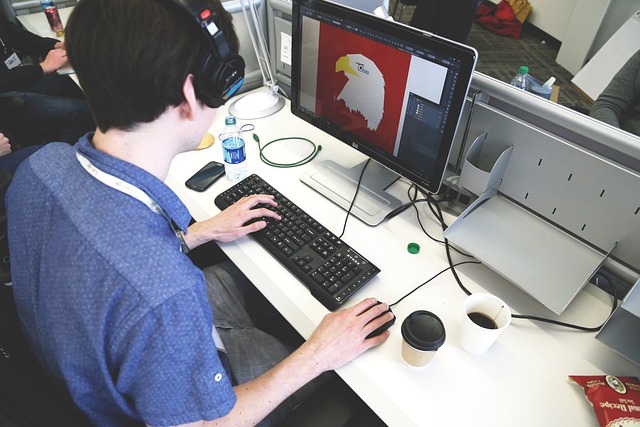Are you a design student ready to enter the workforce? You’re probably feeling overwhelmed right now, wanting to make sure that you take all the right steps in order to start your career as a successful graphic designer. Don’t worry! This blog post will guide you through what is needed and show you how to set yourself up for success in this field. Here we’ll go over tips on getting your portfolio together, networking with fellow designers, and marketing yourself so employers can easily find out about your work. If you want additional help with your career, find a marketing recruitment agency to help you discover job opportunities in the field. Read on for some great advice on launching your professional journey as a brilliant graphic designer!
Demonstrate your knowledge of software programs and design basics
Graphic design is an important pillar of the creative industry, with professionals using a variety of tools to express themselves visually. To thrive in this field, it is essential to have a thorough understanding of its fundamentals and the creative software programs used. Besides mastering the basics of colour theory, typography, and image manipulation, designers need to familiarise themselves with popular software such as Adobe Photoshop, Adobe Illustrator, SketchUp Pro, and InDesign. Knowing how to use these tools effectively allows graphic designers to diversify their skillset and unlock their full creative potential. With the right knowledge and practice, individuals can make strides toward becoming accomplished professionals.
Stand out from other candidates
When applying for a graphic design position, one of the best ways to stand out from other applicants is by demonstrating how your existing skills are transferable to the role. For example, if you have prior customer service experience, this can be utilised in the position as customer service is a big part of many graphic design jobs. Additionally, having knowledge of user experience (UX) or interface (UI) design can give you a competitive edge. Being knowledgeable in coding languages and search engine optimization (SEO) can also increase your chances of landing the job. Utilising these skill sets not only sets you apart from other applicants but also showcases your multiple talents and capabilities to employers.
Create a portfolio of your best design work to showcase your talents
Showcasing your design work can be a great way to market yourself as a designer and expand your portfolio. Whether you are looking for job opportunities or attempting to start a career in the field, having a portfolio of your best pieces is a necessary step. There are many platforms that allow you to create an online portfolio where potential employers and clients can view your work in one place. If you have physical pieces, consider creating a digital portfolio as well to reach more people online. Take the time to curate each piece and include information on the process and materials used if applicable so viewers can learn more about your work and its creation. Doing this will help establish yourself as an expert in the design field and could land you some exciting opportunities!
Get involved with community events to demonstrate your skills and make contacts in the industry
Taking part in community events, contests, and local businesses is a great way to showcase your graphic design skills and network with people in the industry. Participating in such activities will help you to increase your visibility and meet potential employers, which may open doors to significant opportunities. Additionally, engaging in these activities gives you an insight into the trends that are implemented across different industries and helps you broaden your graphic design knowledge. So if these kinds of participation is available in your local area, take the opportunity to demonstrate your skills while making contacts who may come in handy at some point in the future.
All in all, anyone interested in pursuing graphic design as a career needs to be willing to put in hard work and dedication. It’s important to stay up-to-date on the fundamentals, creative software programs, and trends within your chosen field. Additionally, practice self-promotion, develop a strong portfolio for showcasing your best work, and get involved with local events or businesses. Learning the basics of graphic design and building a portfolio is only the beginning, but with this knowledge foundation, you can set yourself up for success. Don’t be discouraged if you don’t land that job or project right away — remember it takes time to perfect your craft. Apply yourself with diligence and patience and most importantly have fun along the way!
